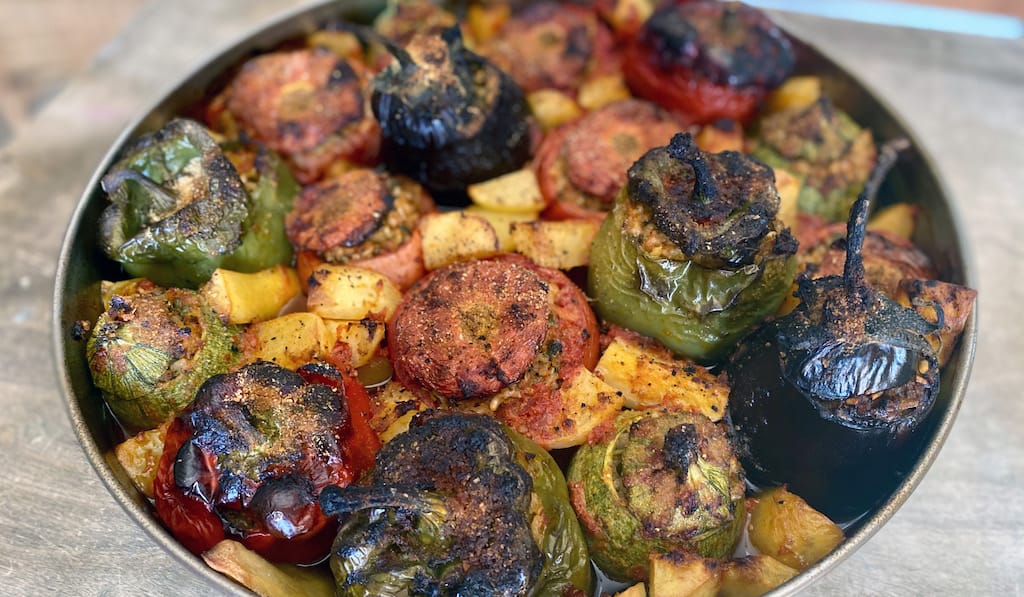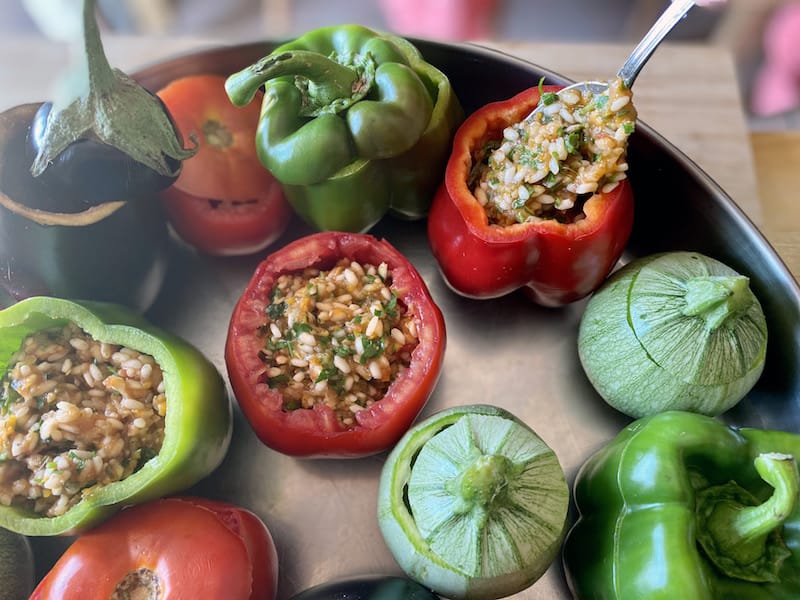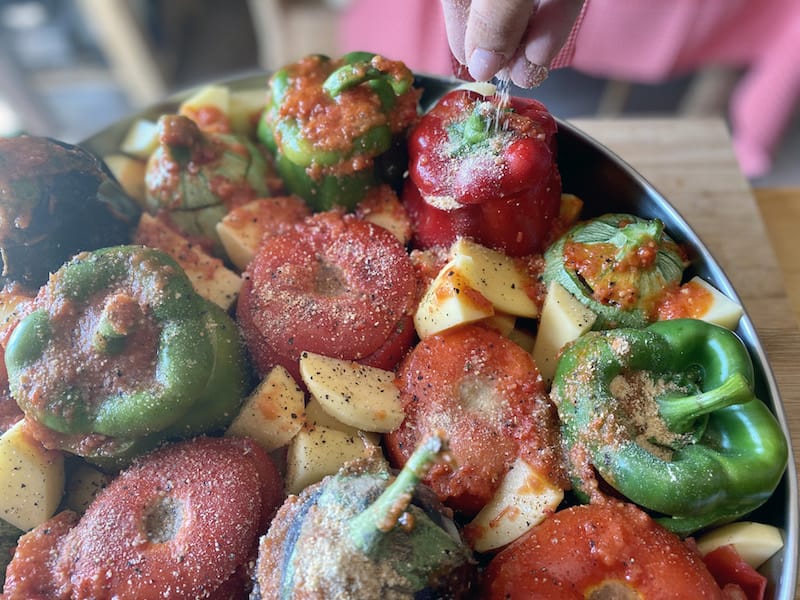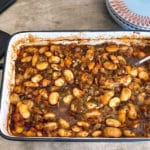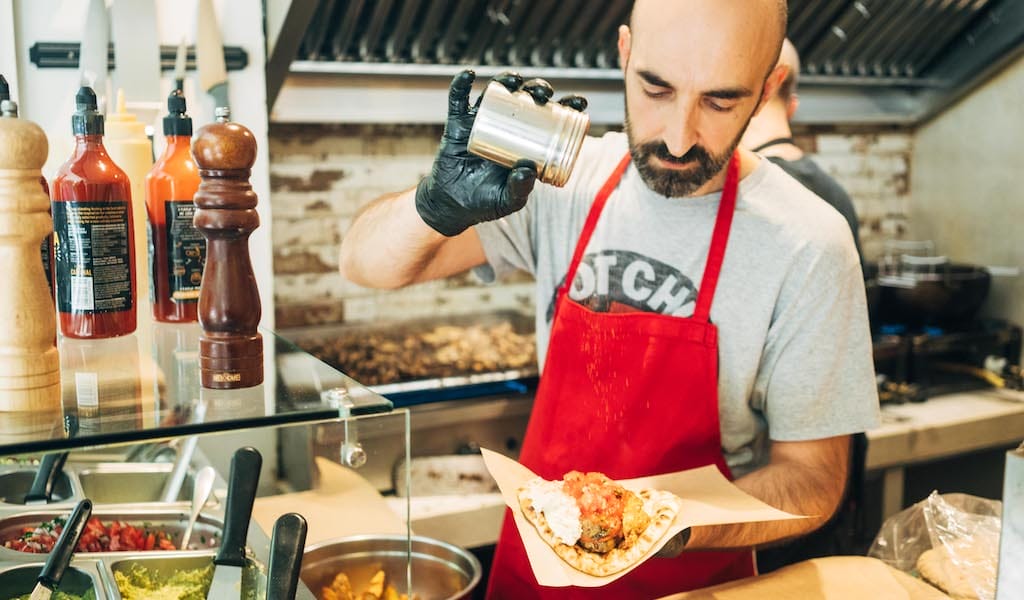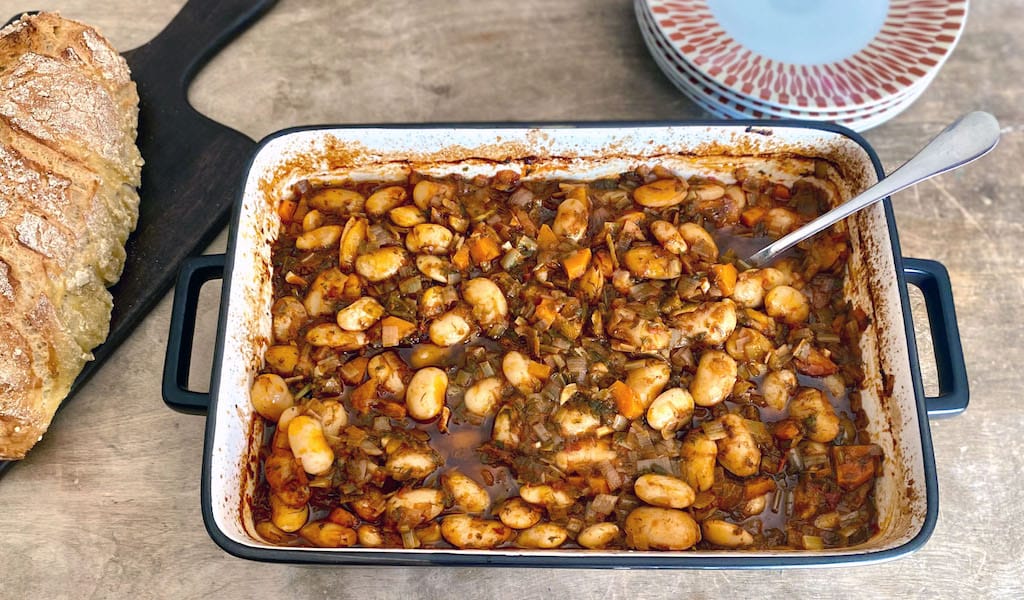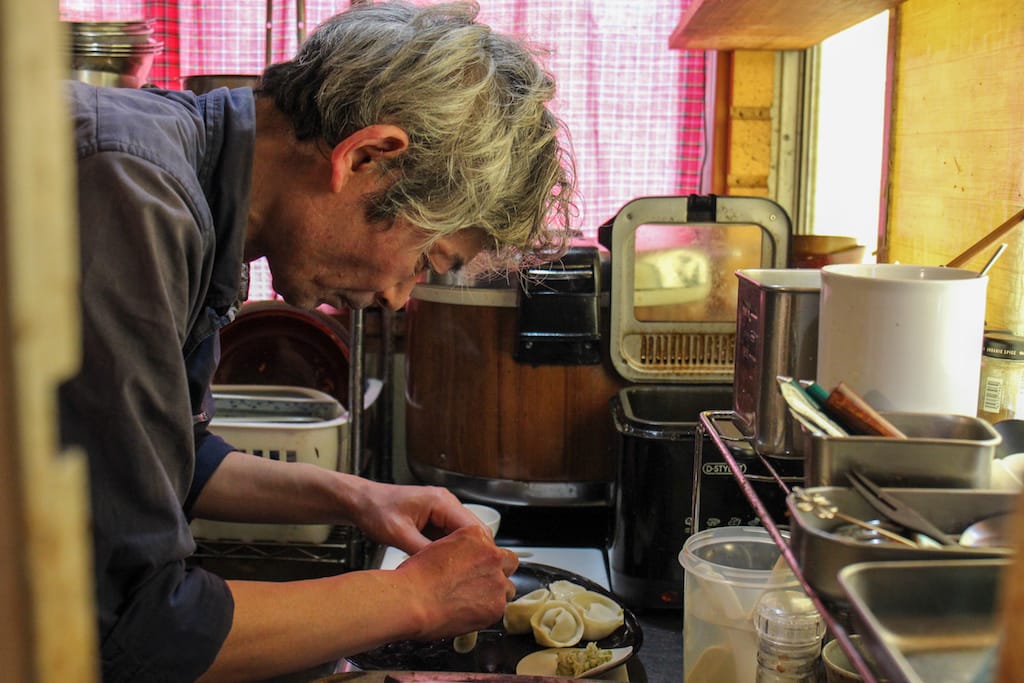In terms of popularity, no other dish in Greece can compete with gemista (γεμιστά, which means stuffed in Greek and refers to vegetables stuffed in various ways). I can’t think of even one person I know who doesn’t eat it in some form, whether tomatoes, peppers, zucchinis (and their flowers), onions or eggplants stuffed with some combination of meat, rice, wheat or other grains, seafood, pulses, nuts, fresh herbs and spices. It’s a popular dish across the Mediterranean as well as in the Middle East and the Balkans.
Gemista differs from stuffed leaves, like cabbage or grape leaves, which technically fall into the “rolled” rather than the “stuffed” category (even though they are referred to as “stuffed” in English) and thus are given a different name in Greek. Unless further specified, gemista usually involves stuffing tomatoes and green peppers, which are then baked.
All across Greece gemista are prepared in various ways. The meatless versions are known as orfana (ορφανά): A summer favorite, they are best eaten cold with a chunk of feta on the side and good, crusty bread. They are usually baked in the oven, although for certain vegetables, notably zucchinis and their flowers, some recipes call for cooking them in a pot.
Even within the realm of orfana gemista, there are several variations. While many people stick to a large baking pan of stuffed tomatoes and green peppers with chunky potatoes fit between them, others add in stuffed zucchinis and eggplants for a bit of variety and a slightly different taste, or even stuffed grape leaves, as they commonly do on Crete. In Florina, a region in northern Greece, they stuff their famous long sweet peppers, using fresh peppers in the summer and dried ones in the winter (although the stuffing for the latter usually includes minced pork).
As for the stuffing, Cretans traditionally used xinohontro – dried, coarsely ground wheat that has been boiled in fermented goat and/or sheep milk – in place of rice. In parts of Arcadia, in the Peloponnese, the stuffing is a mix of cracked wheat and crumbled feta, while the stuffing in the “Politika” version, brought over by the Greeks from Asia Minor and Constantinople (Istanbul), includes cinnamon, pine nuts and raisins.
My favorite version is simple and classic: rice with lots of finely chopped onion and the insides of the vegetables being stuffed, and plenty of chopped fresh parsley and mint. I normally use the medium-grain “carolina” or “fancy” (blue rose) rice here in Greece, although arborio or another type of risotto rice will do. I like to use a variety of vegetables, as they add more flavor and aromas. If you want to keep it simple, just go with tomatoes and peppers.
The tomato is always the star here. You’ll need plenty of them, not just for stuffing but also for the sauce. I always blend fresh tomatoes with olive oil, seasoning and a bit of water for the sauce. They need to be in season, medium-large and ripe enough to scoop them out without tearing the outer layer. I use green peppers as well as a couple of red for their sweetness, round zucchinis because they bake and look better, and medium-sized eggplants that can easily stand on the baking pan. (I generally choose my vegetable to have a good shape for stuffing, to be quite rounded and to be able to stand up nicely in the baking pan.) I also squeeze plenty of potatoes in between the stuffed vegetables. I recommend making a big batch since they keep great in the fridge for a couple of days and are perfect for an office or school lunchbox.
I have many fond memories of eating gemista cold from the fridge together with an ice-cold beer and good company. But my most vivid memory of the dish was preparing it as a kid with my grandmother on the island of Aegina, where she spent her summers. Down the street from her house was an old bakery with a traditional wood-burning oven. It was common back then for people to prepare food at home in the morning and then take it to the local baker, who would bake it in their oven. We would go back to pick up the finished dish during lunchtime – believe me, there’s nothing better than a tray of gemista baked in wood-burning oven!
I have now perfected my grandmother’s gemista recipe, and even though I don’t often get to bake them in a wood-burning oven, I always enjoy them just as much I used to as a child.
Gemista (Greek Stuffed Vegetables)
6 tomatoes, medium-large and ripe
3 green peppers
2 red peppers
2 medium-sized eggplants
4 round zucchinis (long zucchinis can be substituted, but I recommend selecting for shorter and wider ones)
5-6 potatoes peeled, cut in half crosswise and then quartered
220 ml olive oil
3 large onions, chopped
2 garlic cloves, chopped
1 large carrot, grated
2 tsp dried oregano
500 gr white carolina rice or risotto rice
½ cup chopped fresh parsley
½ cup chopped fresh mint
330 gr very ripe tomatoes (around four small or two large, for pulsing in blender)
200 ml water + 100 ml water
2 tbsp breadcrumbs
Salt
Black pepper
Wash the vegetables and pat them dry. Neatly slice off the top part of the stem (it will work as a lid). Place all your vegetables in a large, deep baking pan. Start with the tomatoes and scoop out their insides with a teaspoon. Put all the tomato pulp in a blender and briefly pulse. Remove all seeds from the peppers. Scoop out the eggplants and zucchinis (if using long zucchinis, scoop out the insides with a zucchini corer rather than a teaspoon), and finely chop the insides you’ve removed.
Place a deep, large skillet on medium heat. Add 50 ml of olive oil and sauté the onion for a couple of minutes until golden. Add in the garlic and stir for another minute before adding the chopped zucchini and eggplant and the grated carrot. Stir for another minute and add in the rice to sauté. Add salt and pepper to taste and stir until the rice is glossy. Add in the pulsed tomatoes, stir for a couple of minutes and add 100 ml of water. Stir until most of the liquid is cooked down (it should not look completely dry but rather should still be juicy). The rice should be very undercooked otherwise it will go mushy. Remove from heat, add in the oregano and fresh herbs, and stir. Adjust salt if necessary.
Preheat the oven to 180 C. Start filling the hollowed vegetables using a teaspoon. Don’t overstuff them, as the rice will expand when cooked through (leave about 1 cm from the top). Place the tops of the vegetables back on. Mix the potatoes with salt and pepper and place them between the vegetables in the baking pan.
Put the rest of the tomatoes in a blender along with the rest of the olive oil and water. Pulse until smooth and season with salt and pepper. Pour the sauce on top of the vegetables and into the baking dish. Sprinkle the vegetables with the breadcrumbs and bake for about 60-70 minutes on the low rack of your oven, until they look almost charred.
Remove from the oven and let stand for about 15 mins before serving. Serve with a slice of feta.
To convert metric measurements to U.S. and British kitchen units, click here.
Published on September 18, 2020







































